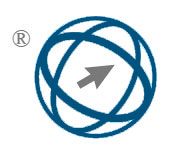Convolutional Neural Network (CNN) Based Martian Dune Detection
Abstract
Full Text:
PDFReferences
Urso A., et.al. 2018. Dune-Yardang Interactions in Becquerel Crater, Mars. Journal of geophysical research: planets. vol.123. Issue:2. pp. 353–368. doi: 10.1002/2017JE005465.
Sagan C. and R.A. Bagnold 1975. Fluid transport on Earth and aeolian transport on Mars. Icarus. vol.26. pp.209-218.
Greeley R., R.O. Kuzmin and R.M. Haberle. 2000, Aeolian process and their effects on understanding the chronology of Mars, Space Science Reviews:96, 393-404
Mckee E. D., (1979) ‘A Study of Global Sand Seas’.
Runyon K.D. et al., 2016, An integrated model for dune morphology and sand fluxes on Mars, Earth and Planetary science Letters, 451, 204-212
Chao L. and Zhibao D. (2022) Distribution of Dune Landform on Mars. Front. Astron. Space Sci. 9:811702. doi: 10.3389/fspas.2022.811702
Hayward R. K, et al.,(2014). Mars Global Digital Dune Database (MGD3): Global Dune Distribution and Wind Pattern Observations. Icarus 230, 38–46. doi:10.1016/j.icarus.2013.04.011
Hayden S., 2009, Neural networks and learning Machines, Third edition
Bandeira et.al. 2012. Advances in automated detection of sand dunes on Mars. Earth surface processes and Landforms. doi: 10.1002/esp.3323
Martins R., P. Pina, J.S. Marques, M. Silveira, (2009). Crater detection by a boosting approach. IEEE Geosci. Remote Sens. Lett. 6 (1), 127– 131.
Bandeira L., J. Saraiva, P. Pina, (2007). Impact crater recognition on Mars based on a probability volume created by template matching. IEEE Trans. Geosci. Remote Sens. 45 (12), 4008–4015.
Stepinski and Tomasz (2009), Automatic detection of sub-km craters in high resolution planetary images, Planetary and Space Science, doi: 10.1016/j.pss.2009.03.009, vol.57
Palafox L.F., C.W. Hamilton, S.P., Scheidt, A.M, Alvarez, (2017), Automated detection of geological landforms on Mars using Convolutional Neural Networks, Computers & Geosciences, Vol, 101, Pages 48-56, ISSN 0098-3004, doi:10.1016/j.cageo.2016.12.015.
Silburt A., M. Ali`-Dib, C. Zhu, A. Jackson, D. Valencia, Y.Kissin, D. Tamayo, K.Menou, (2019), Lunar crater identification via deep learning, Icarus, Vol.317, pp 27-38.
Gonzales C. and W. Sakla (2019), Sematic segmentation of Clouds in satellite Imagery using deep pre-trained U-Nets, 2019 IEEE Applied Imagery Pattern Recognition Workshop (AIPR), Washington, DC, USA, 2019, pp. 1-7, doi: 10.1109/AIPR47015.2019.9174594.
Sánchez-Bayton M., M. Herraiz, P. Martin, B. Sánchez-Cano, E. Tréguier, A. Kereszturi (2022), Morphological analyses of small and medium size landforms in Scandia Cavi and Olympia Undae, Northern circumpolar region of mars, Planetary and Space Science, Volume 210, 105389, ISSN 0032-0633, doi:10.1016/j.pss.2021.105389.
Silburt A., M. Ali-Dib, C. Zhu, A. Jackson, D. Valencia, Y. Kissin, D. Tamayo, K. Menou, (2019), Lunar crater identification via deep learning. Icarus , 317, 27–38.
Palafox L. F., et al. 2017. Automated detection of geological landforms on Mars using Convolutional Neural Networks.Computers and Geosciences.vol.101. pp. 48–56. doi: 10.1016/j.cageo.2016.12.015.
Lucas A. et.al., 2014. Growth mechanisms and dune orientation on Titan, Geophysical research letters, Volume41, Issue17, Pages 6093-6100, https://doi.org/10.1002/2014GL060971
He K., et al. 2016. Deep residual learning for image recognition, Proceedings of the IEEE Computer Society Conference on Computer Vision and Pattern Recognition, pp. 770–778. doi: 10.1109/CVPR.2016.90.
Rubanenko L., Pérez-López S., Schull J. and. Lapôtre M. G. A,(2021) Automatic Detection and Segmentation of Barchan Dunes on Mars and Earth Using a Convolutional Neural Network, IEEE Journal of Selected Topics in Applied Earth Observations and Remote Sensing, vol. 14, pp. 9364-9371, doi: 10.1109/JSTARS.2021.3109900.
Ronneberger O., Fischer, P., & Brox, T. (2015). U-Net: Convolutional Networks for Biomedical Image Segmentation. Medical Image Computing and Computer-Assisted Intervention – MICCAI 2015, 234–241. doi:10.1007/978-3-319-24574-4_28
Ulmas P., and I. Liiv, 2020. Segmentation of Satellite Imagery using U-Net Models for Land Cover Classification. IEEE Access. pp. 1–11. Available at: http://arxiv.org/abs/2003.02899.
Wagner F. H., et al.2020. U-Net-id, an instance segmentation model for building extraction from satellite images-Case study in the Joanopolis City, Brazil. Remote Sensing, 12. pp. 1–14. doi: 10.3390/rs12101544.
Zhang Z., Q. Liu, and Y. Wang, 2018. Road Extraction by Deep Residual U-Net.IEEE Geoscience and Remote Sensing Letters. 15(5), pp. 749–753. doi: 10.1109/LGRS.2018.2802944
Jha D., et al. 2019. ResUNet++: An Advanced Architecture for Medical Image Segmentation. Proceedings - 2019 IEEE International Symposium on Multimedia, ISM 2019, pp. 225–230. doi: 10.1109/ISM46123.2019.00049.
Wolff M.J. et.al., 2013, Calibration and Performance of the Mars Reconnaissance Orbiter Context Camera (CTX), MARS The international journal of Mars science and exploration, MARS 8, 1-14, 2013; doi:10.1555/mars.2013.0001
Schwenzer S.P. et al., 2012, Gale Crater: Formation and post-impact hydrous environments, Planetary and space science, vol.70, pp.84-95.
Palucis, M.C. et al., 2016, Sequence and relative timing of large lakes in Gale crater (Mars) after the formation of Mount Sharp, Journal of Geophysical research:Planets, doi:10.1002/2015JE004905
Wray J.J. 2013, Gale crater: the Mars Science Laboratory/Curiosity Rover Landing Site, International Journal of Astrobiology 12 (1): 25–38 (2013) doi:10.1017/S1473550412000328.
Rampe E.B.Et al.2019, Mineralogy and geochemistry of sedimentary rocks and eolian sediments in Gale crater, Mars: A review after six years of exploration with Curiosity, Geochemistry, Volume 80, Issue 2, 125605, https://doi.org/10.1016/j.chemer.2020.125605
Fawdon P. et al.,2015, The geological history of Nili Patera, Mars, Journal of Geophysical Research: Planets, 120, doi:10.1002/2015JE004795.
Hood. D.R, 2021, Inferring airflow across Martian dunes from ripple patterns and dynamics, Frontiers in earth science, doi: 10.3389/feart.2021.702828
Mubarak W., et al., 2019, monitoring the movement of sand dunes in the Nili patera caldera on mars using hirise images, Ninth International Conference on Mars 2019 (LPI Contrib. No. 2089)..1016/j.rse.2011.12.010.
Ronneberger O., Fischer, P., & Brox, T. (2015). U-Net: Convolutional Networks for Biomedical Image Segmentation. Medical Image Computing and Computer-Assisted Intervention – MICCAI 2015, 234–241. doi:10.1007/978-3-319-24574-4_28
Hu J., et al. 2018.Squeeze-and-Excitation Networks. IEEE/CVF Conference on Computer Vision and Pattern Recognition. pp. 2011–2023. doi: 10.1109/CVPR.2018.00745.
Chen L. C., et al. 2016. DeepLab: Semantic Image Segmentation with Deep Convolutional Nets, Atrous Convolution, and Fully Connected CRFs, IEEE Transactions on Pattern Analysis and Machine Intelligence, Vol.20, No.20.1-14. doi: 10.1109/TPAMI.2017.2699184.
Vaswani A., et al.2017.Attention is all you need.31st Conference on Neural Information Processing Systems (NIPS 2017). pp.1-15
DOI: https://doi.org/10.31449/inf.v49i3.7297

This work is licensed under a Creative Commons Attribution 3.0 License.









